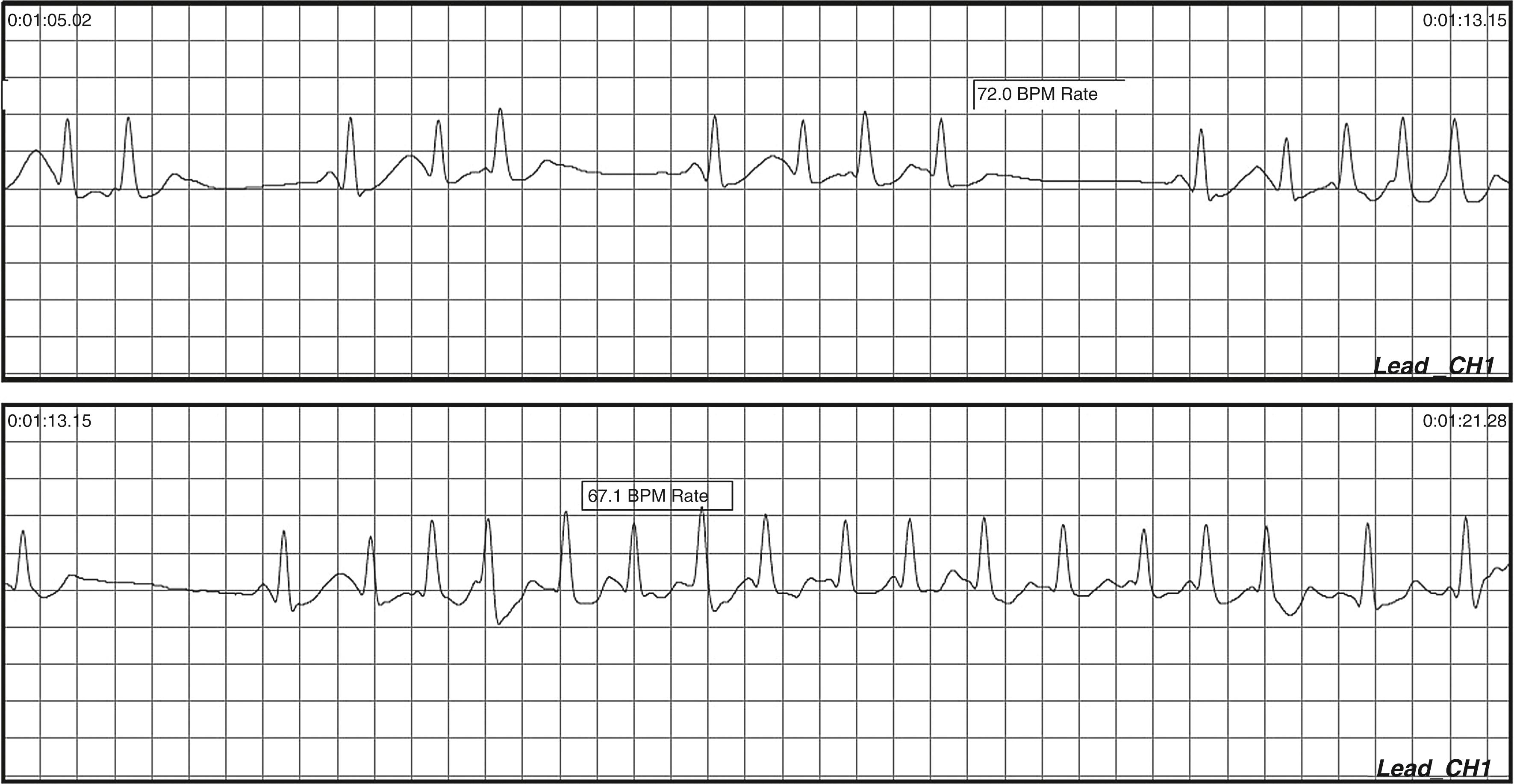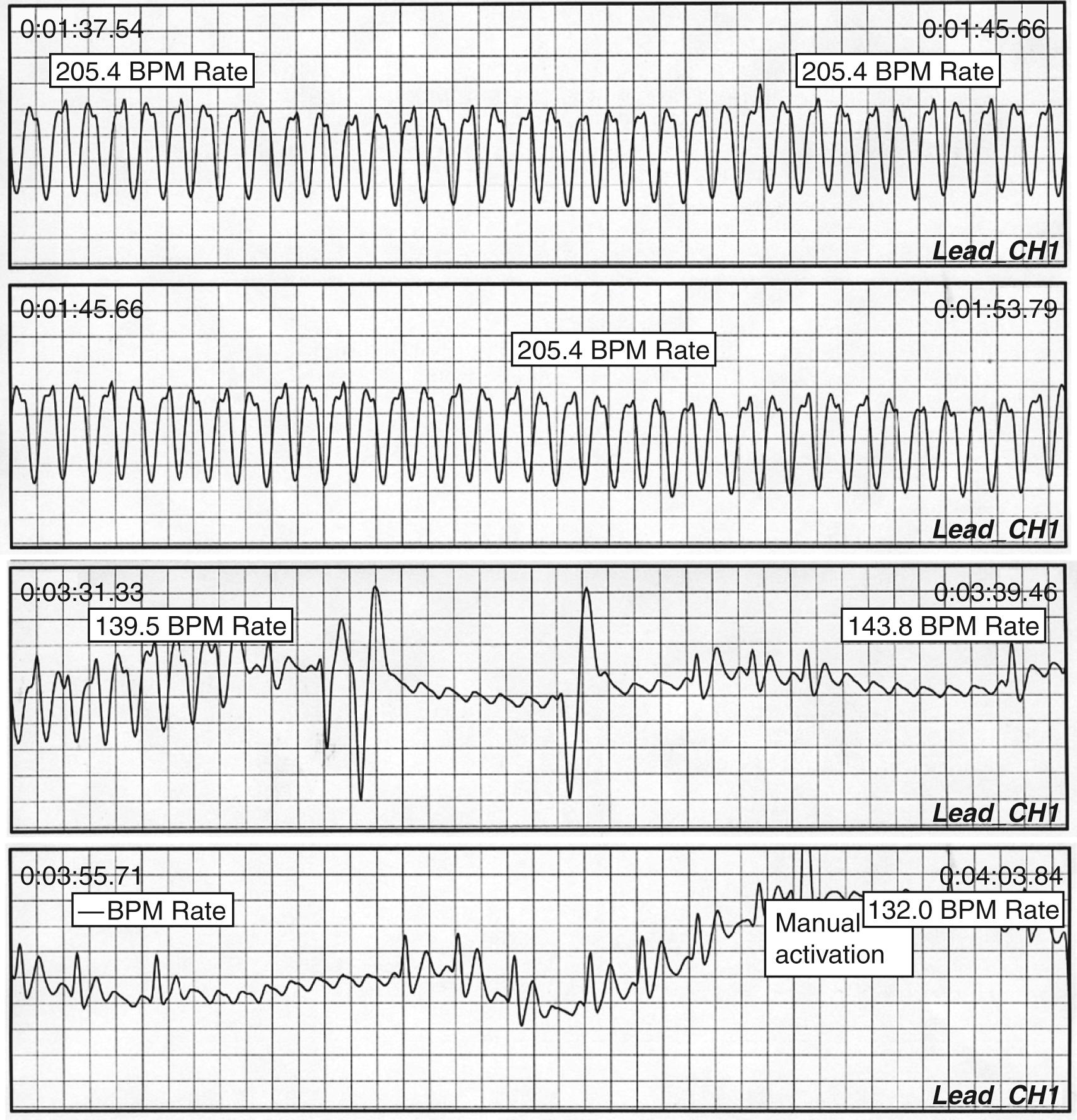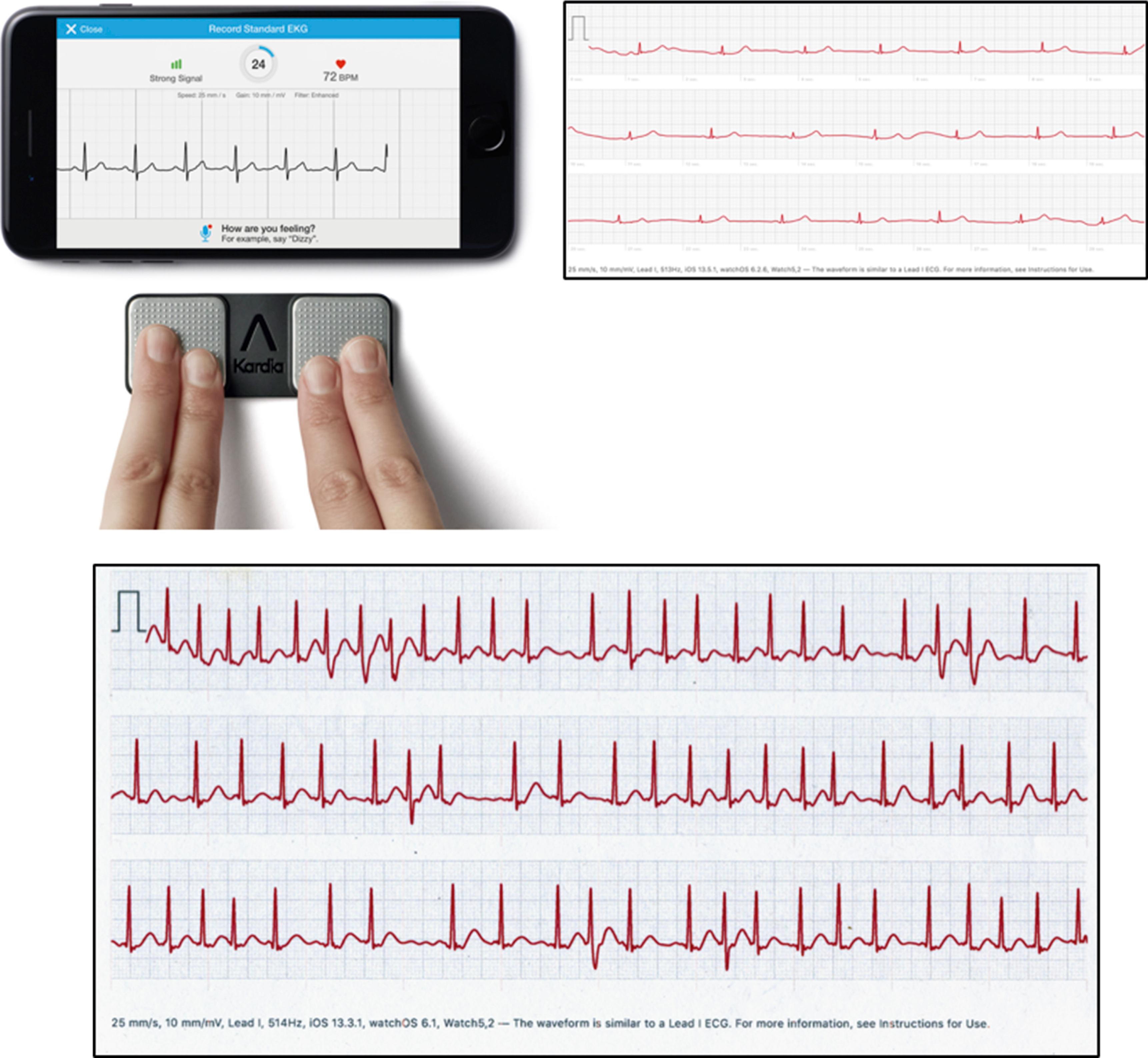Physical Address
304 North Cardinal St.
Dorchester Center, MA 02124
Ambulatory cardiac monitoring to detect arrhythmias became practical with the development of Holter monitoring and its subsequent derivatives. The clinician is currently armed with an array of tools to provide progressively longer durations of electrocardiogram (ECG) monitoring to obtain a rhythm profile and to establish a symptom rhythm correlation in patients with infrequent symptoms ( Fig. 62.1 ).

Clinical trials using traditional skin electrodes, patches, and insertable cardiac monitors have validated a clear role in unexplained syncope and growing utility in a range of conditions including atrial fibrillation (AF), atypical epilepsy, vasovagal syncope, and post–myocardial infarction arrhythmia detection. Advances in design with the potential addition of other physiologic sensors have strengthened the capability of external and implantable devices. With the explosion of medical and direct-to-consumer wearables recording ECG data in patients and the general public, sensors and resultant data are transforming the nature of health care (see also Chapter 60 ). Smartphone-based devices and applications provide a broad range of physiologic parameters including the ECG with associated analytics, and emerging access to blood pressure, oxygen saturation, and numerous other traditionally health care facility–based parameters. This chapter focuses on cardiac monitoring as it applies to current practice, recognizing that an explosion of monitoring technologies is in development or validation at present.
Syncope (see Chapter 103 ) is the prototype condition that is ideally served by long-term ambulatory monitoring. The periodic and unpredictable nature of events and the high spontaneous remission rate are the major obstacles to diagnosis in most patients. Other forms of testing in unexplained syncope usually provide a context for the bedside formulation of a differential diagnosis and prognosis but rarely provide a specific diagnosis. Classic “provocative” testing with tilt and electrophysiologic testing may be negative or yield abnormalities of unknown significance, which is reflected in the poor predictive value of both tests. These obvious limitations turn our attention to graduated durations of cardiac monitoring as a step toward the gold standard of comprehensive physiologic assessment during spontaneous symptoms. This chapter discusses the technical aspects and established utility of a monitoring device, with a focus on syncope and AF, and explores the emerging use of monitoring technologies. The reader is also directed to the most recent consensus statement on cardiac monitoring by the Heart Rhythm Society and the International Society for Holter and Noninvasive Electrocardiology.
The Holter monitor is a portable battery-operated device that connects to the patient using bipolar electrodes and provides recordings from up to 12 ECG leads. Data are stored in the device using digital storage media. The data are analyzed using software with technologist and physician editing and reporting. Additional markers for patient-activated events and time correlates are included to allow greater diagnostic accuracy. Continuous ECG monitoring is possible for 24 to 72 hours with conventional Holter monitors. Novel extended duration continuous recording technologies are discussed subsequently. Complete rhythm capture allows for the documentation of rhythm for symptomatic and asymptomatic events. Holter monitoring is useful if the clinical history is suggestive of an arrhythmic etiology and if the symptoms are frequent enough to be detected within the period of monitoring. Holter monitoring may also provide a rhythm profile to provide evidence of sinus node dysfunction or potentially significant ambient arrhythmias and assess rate control of AF.
Holter monitoring has several drawbacks. The biggest limitation is that patients are unlikely to experience symptoms or cardiac arrhythmias during the usual Holter recording period. In patients with syncope, the likelihood of another syncopal episode occurring during the monitoring period is the major limiting factor. Presyncope is a more common event during ambulatory monitoring (see Fig. 62.1 ) but is less likely to be associated with an arrhythmia. The ubiquity of presyncope as a symptom in the community makes its utility as a surrogate for syncope relatively uncertain. The physical size of the device may hinder the ability of patients to sleep comfortably or engage in activities that precipitate symptoms. Patients are further inconvenienced because the device has to be removed while showering. The observations on Holter monitoring must be correlated with the clinical context in the absence of symptoms. There is often significant variability in patient documentation of activated events, such that the accurate symptom-rhythm correlation is undermined. Lastly, other technologies provide real-time or near real-time analysis (see later), which is preferred in most clinical situations.
It is not surprising that Holter monitoring has a low diagnostic yield. In several large series using 12 hours or more of ambulatory monitoring for the investigation of syncope, only 4% had a recurrence of symptoms during monitoring. The overall diagnostic yield of ambulatory or Holter monitoring was 19%. These studies reported symptoms that were not associated with arrhythmias in 15% of cases. The causal relationship between the arrhythmia and the syncope was frequently uncertain. Uncommon asymptomatic arrhythmias, such as prolonged sinus pauses, atrioventricular (AV) block (such as Mobitz type II block), and nonsustained ventricular tachycardia (VT) can provide important contributions to the diagnosis instigating further investigations to rule out structural heart disease and other precipitating factors. Although these observations necessitate prompt attention, it is important to interpret the results in the context of the clinical presentation and not unduly exclude common causes of syncope, such as neurocardiogenic syncope.
It is also important to understand that a normal Holter monitor does not exclude an arrhythmic cause for syncope. In fact, this is typically the case. If the pretest probability is high for an arrhythmic cause, extended monitoring is often indicated. In a study that evaluated the extension of ambulatory Holter monitoring duration to 72 hours, there was an increase in the number of asymptomatic arrhythmias detected but not in the overall diagnostic yield.
In our institution, we typically use Holter monitoring for 24 hours. It is a noninvasive test that provides information to establish a rhythm profile in patients and the diagnosis in those with frequent symptoms. The more frequent the symptoms, the higher the diagnostic yield. The apparent modest yield of Holter monitoring presumably reflects the primary care use of the device in patients with frequent symptoms facilitating a symptom-rhythm correlation. This leads to selection bias in the referral population, leading to an apparent futility in referred patients who, by definition, have not responded to short-term monitoring.
Transtelephonic monitors are a form of noncontinuous ambulatory recording that are convenient for patient use. During symptomatic episodes, the patient activates the device, which then records the ECG signals. The recorded event must be directly transmitted to a receiving center. The received signal is then converted to an analog recording that is displayed or printed as a single-lead rhythm strip ( Fig. 62.2 ). The device has solid-state memory capacity allowing for the recording and storage of ECG signals during symptoms. The ECG signals are collected prospectively for 1 to 2 minutes upon patient activation. The major disadvantages of such devices include the need for patient activation, missing asymptomatic arrhythmias, the requirement that the symptoms persist long enough for the device to record the event, and the inability to record the events that surround the onset of symptoms. With the advent of consumer wearables such as the AliveCor Kardia device and Apple watch, event recorders are increasingly obsolete because the form factor (size and shape) and patient convenience favor the newer devices ( Fig. 62.3 ).


Become a Clinical Tree membership for Full access and enjoy Unlimited articles
If you are a member. Log in here